Let's take a look at 700c vs 26 inch wheels for bicycle touring. I've ridden both for thousands of miles all over the world on bicycle tours, and here's my opinion on what's best.
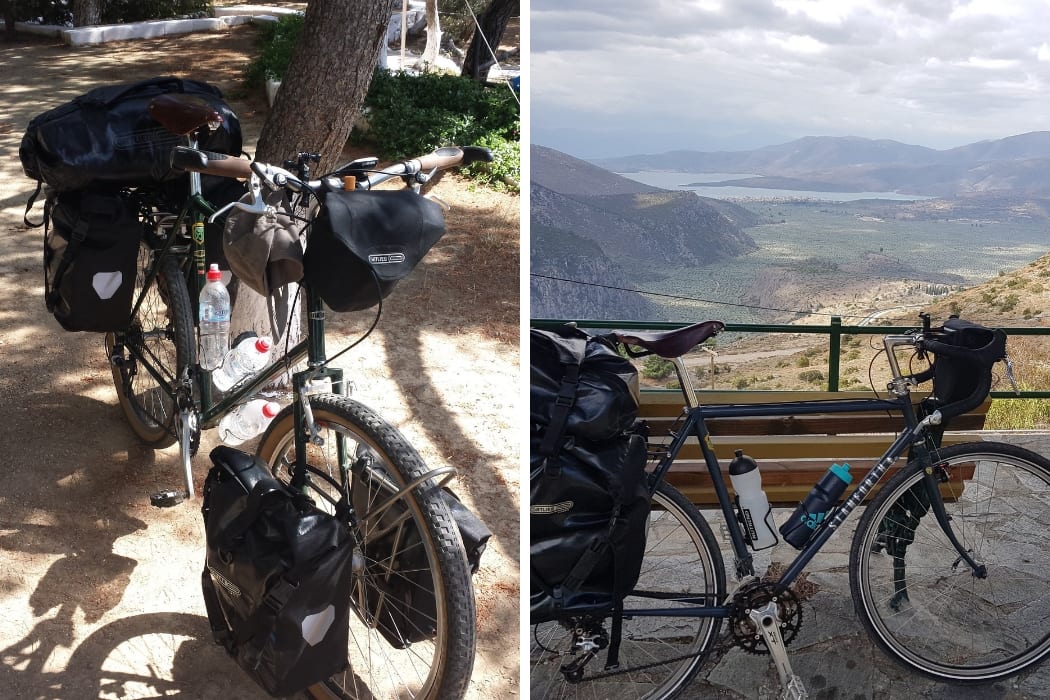
700c Wheels vs 26 Inch Rims and Tires for Bicycle Touring
The subject of which is the best wheel size for bicycle touring can lead to heated discussions that often ramble on for several days in forums and Facebook groups.
In fact, the 700c vs 26 inch wheel debate can sometimes be as passionate as the cycling helmet one!
Over the course of several long distance cycling trips around the world, I have come to my own conclusions as to what size bicycle wheels are the best for my style of touring.
For example, when I cycled from England to South Africa, I used a 700c bike rim touring bicycle. When I cycled from Alaska to Argentina, I used a 26 inch touring bike.
With hindsight, I should have used these the other way around! Which brings me to point number one: You can pretty much ride any bike anywhere. I've seen Penny Farthings and UniCycles being ridden around the world!
Still, based on 40,000 kms bicycle touring, I've concluded that overall, 26 inch wheels are the best for bike touring. But first…
Difference Between 700c And 26 Inch Wheels
What really is the difference between 700 vs 26 inch wheels. Really?
Obviously, one bicycle rim is slightly bigger than the other one, that goes without saying. But what else is there?
The answer to this from a technical point of view, is that 26 inch touring wheels are stronger. As touring bicycles carry quite a bit of weight in terms of luggage and of course the cyclist themselves, this is important.
Considerable strain on the wheels, especially when cycling over rough roads, will lead to broken spokes with weaker 700c wheels. Trust me, I've been there and done that!
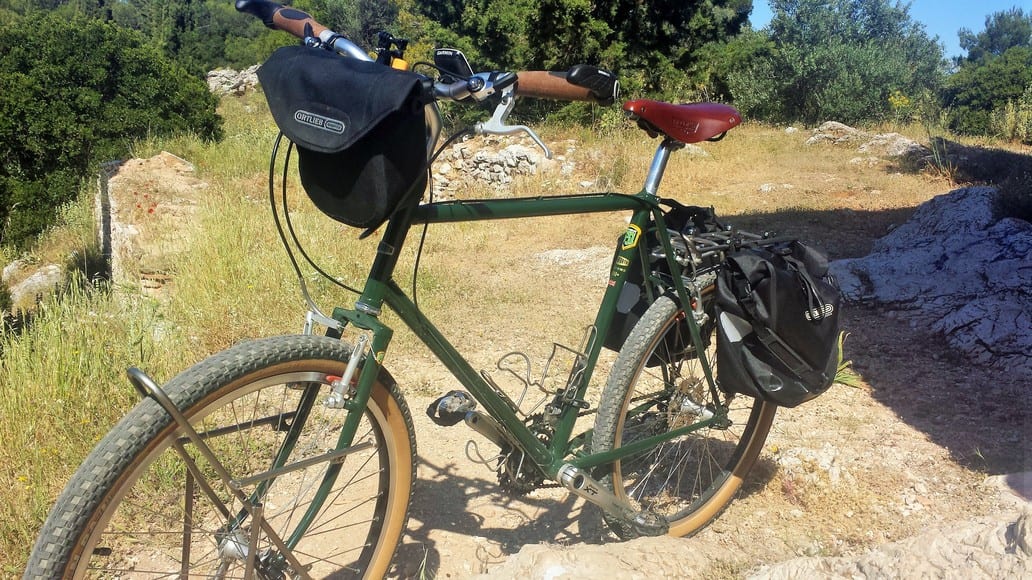
But don't 700c Wheel bikes go faster?
I'm going to say yes on this one, I think they do. I don't have exact figures which are scientifically proven, but I would say you could average a km or 2 an hour faster on a 700c rim touring bike when compared to a 26 inch one.
This is only on sealed roads though. I believe that a 700c wheel bike wouldn't give the same advantage over rougher terrain on a fully loaded touring bike.
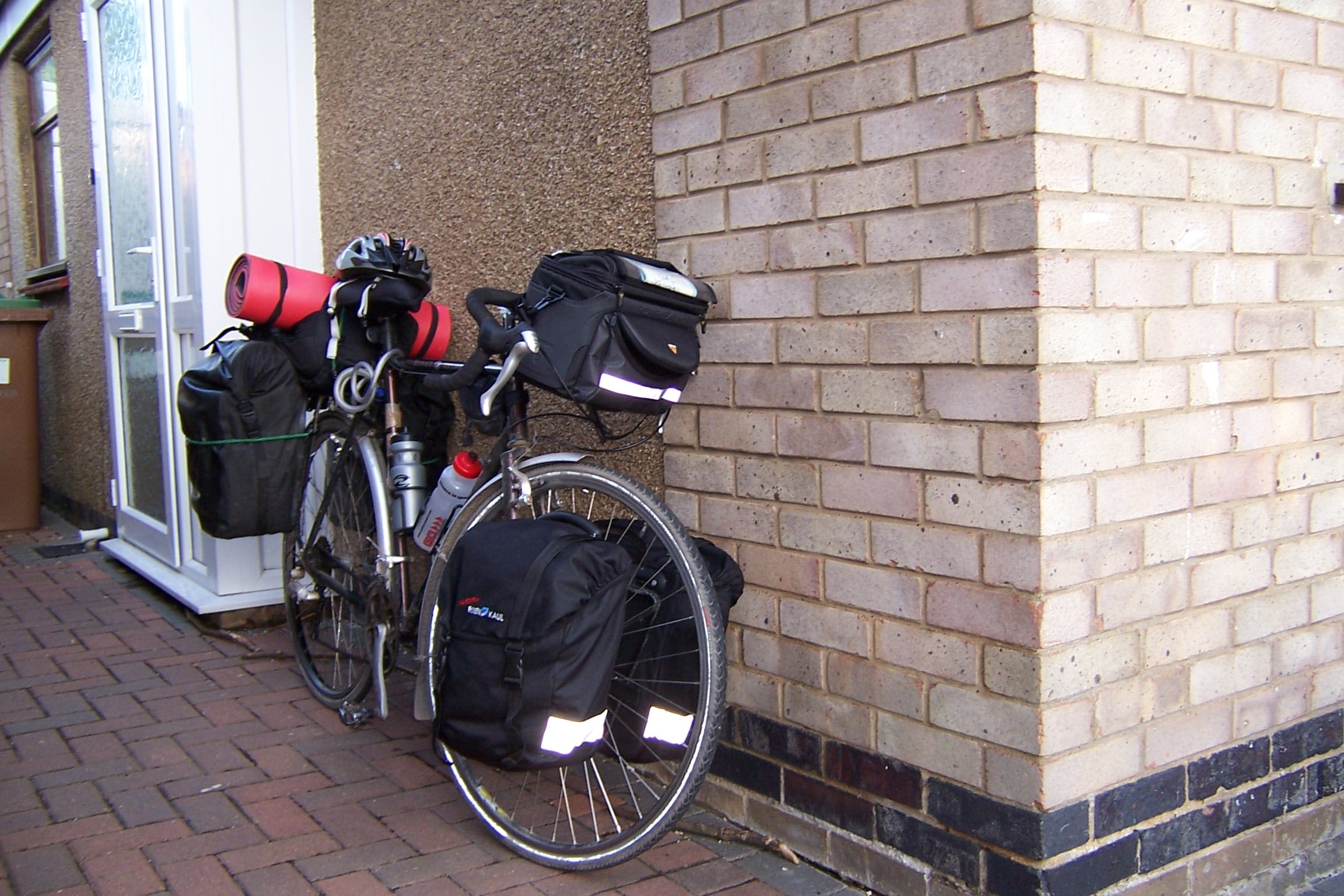
But what about wide tyres?
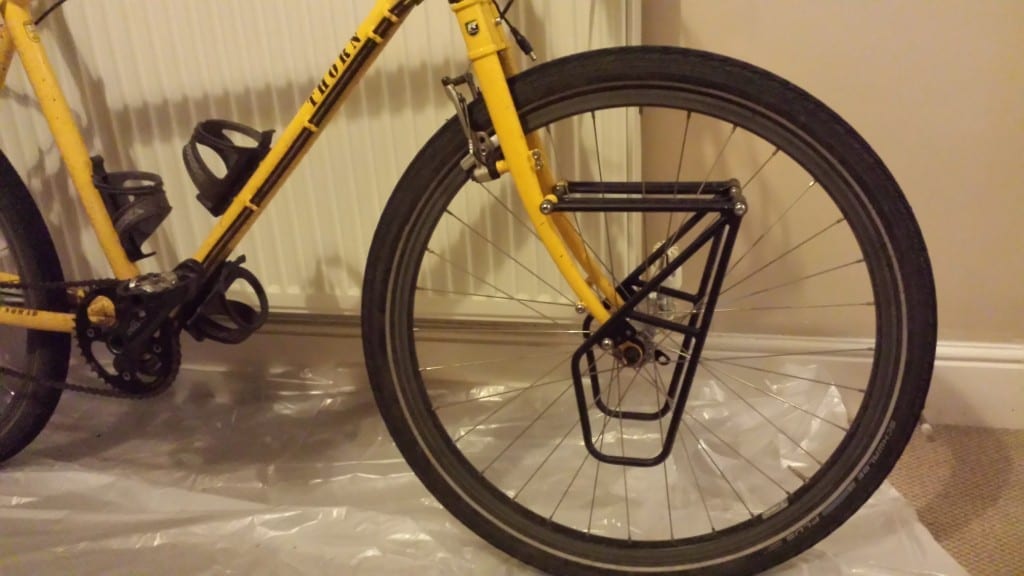
Being able to fit wider bike tires on 26 inchers is also a trait that makes them the best wheel size for bicycle touring. Whilst skinny tyres are required for high speed road racing, they are less than desirable for bicycle touring, especially on gravel and rough roads.
Wider tyres will give better grip, and this is most noticeable on sandy sections. Again, when I cycled through the deserts of Sudan, although I managed it with 700c tires, life would have been a lot easier with 26'ers.
Note: Yes, I know all about fat bikes! They were a bit of a fad overall though, and not really what we're talking about here in terms of touring bicycles.
Will 26 inch wheels disappear?
This is a very valid question. There has been a move away from 26 inch wheel in the western world. Nowadays, you'd struggle to buy a new mountain bike with 26 inch rims.
Touring bikes however, are still available in 26 inch through many bike builders such as Thorn, Stanforth and Surly to name a few. The reason they are still made for touring, is that in the rest of the world it is still very much the standard size.
Perhaps before choosing between 26 or 700c wheels for touring, you'd need to work out in which parts of the world you are most likely to cycle.
Expedition Touring Bike
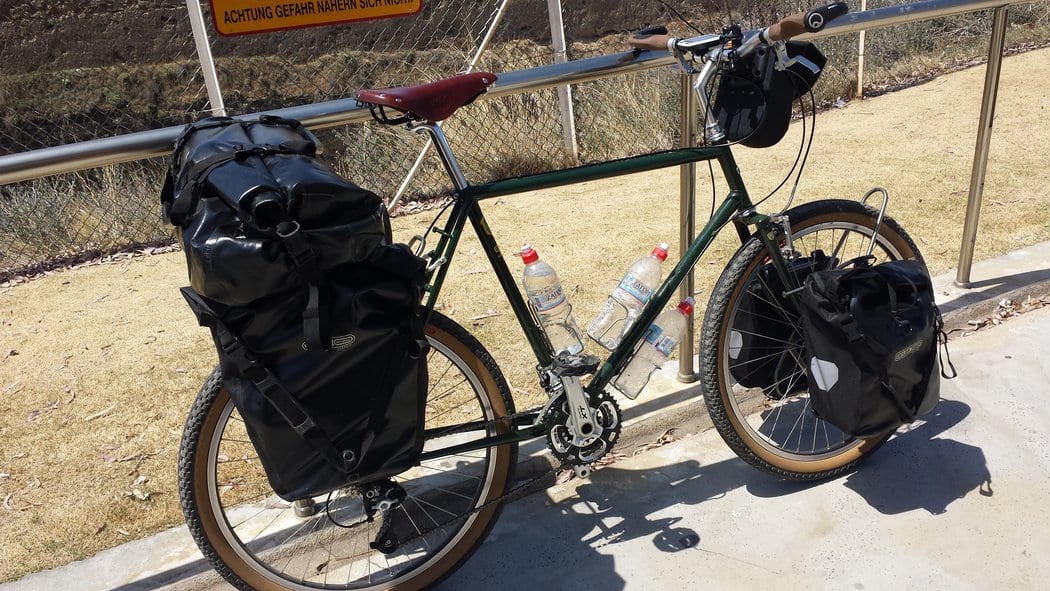
The 26 inch touring bike above is a Stanforth Kibo+, which I rode from Greece to England.
When cycling in less developed countries, where roads and terrain may be rougher, an expedition bike is perhaps most suitable. Heavy duty, and built to last for years, the Thorn Nomad is perhaps the most well known (if expensive) model.
In my opinion, an expedition bike is much better off with 26 inch wheels. This type of bike is meant to go off the beaten path, and is suited for less developed countries.
Expedition bicycles are sturdy and hard going. They should also have simple parts that can be swapped in and out readily, even if the quality of local parts isn't of a high standard. It's better to be able to get something than nothing in an fix!
When it comes to 26 inch vs 700c wheels, you can find bicycle tires and inner tubes for 26 wheels in most places if you look hard enough.
There will also be plenty of people riding old bikes with wheels of this size you might be able to scavenge from!
You can find some reviews of touring bikes with 26 inch wheels in my touring bike reviews section.
Sealed Road Cycling
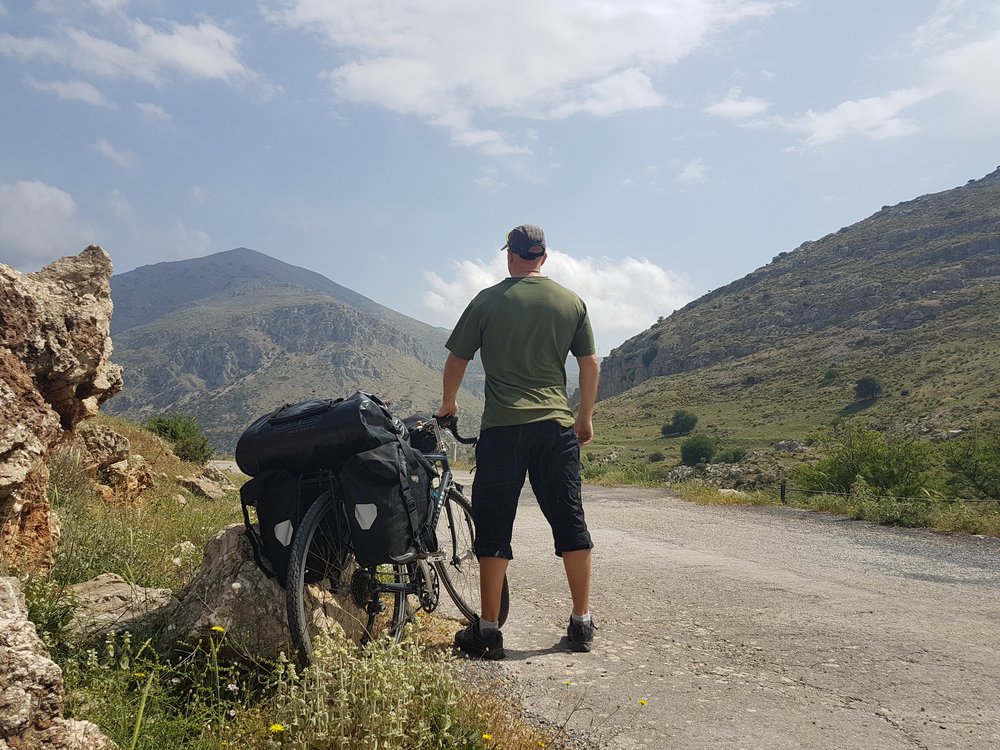
The 700c bike for touring above is the Stanforth Skyelander, which I rode around the Peloponnese in Greece.
If your bike touring adventures are likely to take place in developed countries on sealed roads, then 700c wheels are probably the better choice. You are going to be able to more easily find tyres and inner tubes, and the larger bike wheel will cover ground quicker.
A ‘classic' touring bike is the most common one sold, and most feature 700c wheels.
26″ Wheels Pros for touring
- Easy to find 26 inch tires in the developing world, along with tubes and spokes.
- This was the standard for mountain bikes in the day. Millions of existing bikes to salvage parts from if you need to.
- Smaller wheels like the 26 are better for shorter cyclists
- The wheels of a 26″ touring bike are stronger
- Better for going up steep hills with heavy loads
26″ Wheels Cons for touring
- Harder to find spares in regular bike shops in the developed world.
- You can find parts in the developing world, but they're normally low quality.
- Takes more energy to keep up with a 700c touring bike
- Don't roll as well over bigger obstacles
700c Wheels Pros for touring
- More readily available in the developed world
- Maintains a higher speed with less energy needed
- Better for people taller than 5 foot 6
- It's the current trend (but beware, they are trying to swap to 650b wheels – but that's a different story!)
700c Wheels Cons for touring
- Difficult or next to impossible to find parts in developing world
- More likely to throw a spoke
- Toe overlap issues on some frames
- Smaller tire clearance which may limit tire size
- The 700c bike size is less suited for shorter riders
700c vs 26″ Wheels Decider
The real question to ask yourself is where are you going to ride your bike? Developing countries or more developed countries?
This decider in the debate between 700c vs 26 inch wheels comes down to the availability of tyres and inner tubes. 26 inch wheels are simply the most common wheel size found throughout the world when compared to 700c.
This means that buying tyres, inner tubes and even new rims should they be needed is much easier, especially in less developed countries.
I learned the hard way when cycling England to Africa on 700c wheels, that I would have been far better off on 26 inch wheels. I couldn't find any new inner tubes or tyres for over 2000 miles, and ended up getting new tyres and inner tubes flown out to me at a great expense. Seriously!
So, cycling in developed countries, you should consider a 700cc wheel touring bike.
Cycling in developing countries, a 26 inch expedition touring bicycle would be better.
700c vs 26 Inch wheels conclusion
So, short, sweet, and to the point. In my opinion, the best wheel size for long distance bicycle touring is 26 inch, and indeed this is the wheel size I have chosen for my current Rohloff expedition bicycle.
The reason is, that it will give flexibility in developed countries and less developed countries alike.
I'm certainly not saying that I will never throw a spoke again, or will be able to find spare bicyce tires in every country I cycle through. Overall though, having 26 inch wheels for bicycle touring makes far more sense than having 700c wheels.
If you have an opinion on 700c wheels vs 26 inch for bikepacking, I'd love to hear them. Leave a comment at the end of this cycle touring blog post!
Bicycle Wheels FAQ
What is a 700c wheel in inches?
A 700c wheel (ISO size 622) has the same diameter as a 29 inch wheel. 700c is the current standard for road bike, Cyclocross, and some touring bikes.
What is a 26 inch wheel in mm?
A 26-inch rim (ISO 559 mm) has a diameter of 559 millimetres (22.0 in) and an outside tire diameter of about 26.2 inches (670 mm). They were the common size for mountain bike wheels until around 2010.
How many different bicycle wheel sizes are there?
The most common sizes of bicycle wheel are 16″ Wheels (ISO 305 mm), 20″ Wheels (ISO 406 mm), 24″ Wheels (ISO 507 mm), 26″ Wheels (ISO 559 mm), 27.5″ / 650b Wheels (ISO 584 mm), 29″ / 700c (ISO 622 mm), and 27″ (ISO 630mm).
Which is bigger 700c or 27 inch?
There is not much difference between the 700C and 27″ rim, as they are 622 millimeter and 630 millimeter.
Can you fit 700c wheels to 26 frame?
It may be possible to use a 700 wheelset depending on the frame size. However, if using rim brake they won't line up although disc brakes may do. Also, the geometry of the bike will be off.
Related: Disc brakes vs rim brakes
The Best Bike for Bicycle Touring
Still undecided on what touring rim size to use?As this video is also related to the best wheel size for expedition bicycle touring, you might want to check it out. It's only 3 minutes or so.
I also have a useful collection of bicycle touring tips that is worth a read.
Pin this for later
Would you like to save this guide to 26 vs 700c touring wheels for later? Use the pin below and add it to a Pinterest board on bikepacking and bike touring!

You might also be interested in:
- Best Bike Touring Tires
- Electronic Gear To Take On A Bicycle Tour: Cameras, GPS, and Gadgets
- Best Saddles For Touring: Most Comfortable Bike Seats For Cycling
- Best Powerbank for Bike Touring – Anker Powercore 26800
- Rear Bike Racks For Touring By Bicycle
- Best Pillow for Camping When Bike Touring – Travel Pillows
- Best handlebar bags for touring
- Bike touring shoes
 Article Author: Dave Briggs
Article Author: Dave Briggs
Dave has cycled around much of the world, including multi-year bike touring trips such as cycling from Alaska to Argentina, and England to South Africa. Check out his reviews and tips about bike touring.
Follow Dave on social media for travel, adventure and bicycle touring inspiration:
On a global basis, bikes could be seen in two different ways, as recreational toys and as utility vehicles. Recreational toys are where the money is at, there are many off-the-shelf $$$$ toys available these days and a new utility vehicle can cost less $$$ than a 12-speed cassette. Yet that could be what saves the 26-inch utility wheel which is stronger and more durable than the larger 650b, 28 and 29 wheels.
My 26-inch wheeled bike is a 2017 LHT, 46-34-24T, 12-34T 8-speed, downtube shifters, canti brakes.
Follow the money trail! Big business knows its business! Look at Schwalbe Marathon Mondial HS 428 touring tires, their best. For folding bead tires, two 559/26″, one 584/27.5″ and four 622/700c tires are currently listed. But then for wire bead tires at half the price, only one 559/26″, zero 584/27.5″ and two 622/700c tires are listed. And no other such “ultimate” touring tires are listed for any other sizes. Basically, it looks like Schwalbe recognizes the current market demand for those particular tire sizes and no others, and is testing the 584/27.5″ market strength but is not offering as solid of a commitment.
And while I enjoyed reading this article and agree that 26″ wheels are stronger and more durable than 700c wheels, thank you, Dave, my latest disappointments are in the touring industry switchover to disc brakes and 11-speed drivetrains complete with ever more dished rear hubs and skinnier chains. Worse, Shimano has all but dropped rim brake hubs and 8 to 10 speed hubs, touring triple cranksets and such derailleur components. Anyway, thanks!
Hi Dave,
I don’t dispute that that has been your experience, until now, but things change, also in the developing world. I don’t have much experience in cycle touring but I have backpacked about 100 countries in every continent since the days when there was no internet. 20 years ago no one had mobile phones in Africa while every youngster had already one in Europe. Now everyone has a mobile in Africa.
All innovations eventually become cheaper and spread to less affluent groups and countries. In Europe, it is no longer like choose whatever wheel you like. I am trying to reconvert an old steel frame MTB to touring and have found that the choice of 26″ quality gear is dimishing. Some of the best German online shops don’t stock them at all. Try to look for good 26″ bikes in any LBS, and often there will be none. I believe that this trend will spread, bear in mind that most bike gear is made on Asia, and they make it cheaper and cheaper and sell it worldwide. I see no reason why they would make more and more 28″ bikes in China and not sell them in Africa. I haven’t been to Africa for about a decade, but in South America you find 28″ wheels everywhere these days.
My point is that thinking long term one should bet on 28″, unless you want your bike for a single trip to central Africa right now. And you don’t mind discarding your bike in a few years. The tyres and rims you can pick up in remote parts of the world , will be very poor quality, you will make it to the next city, but for serious long term touring you will need something better and will have to get it sent to you anyway.
Years ago, touring bike specialist manufacturers offered plenty of 26″ models, particularly expedition or world touring bikes. Now many top brands have discontinued them altogether. Let’s take a big name like Fahrradmanufaktur, they have only one 26″ bike in their expedition and trekking ranges, the TX400. They offer it in smaller sizes and if it survives much longer I believe, it will be just to cater for that niche, smaller frames for shorter riders where big wheels pose certain problems.
After all, 28″ is not a new marketing hype, it is the standard going back almost a century , the 26″ became universal with the advent of the mountain bike, but now that not even mountain bikes use them as a standard , I think they are doomed. One will always find spares , but in a shrinking market, they will be more expensive and rare from quality manufacturers.
Hi Eric,
I have no doubt that things change, and will continue to do so.
With that said, currently, if I were to buy a ‘classic’ touring bike for Europe or the USA I wouldn’t hesitate in going for 700c wheels. I’ve been testing a nice one over the last few months actually!
However, for an ‘expedition bike’, I would stick with 26 for now. Although it’s important to think of the future, it also has to be reliable in the present in terms of spares etc. You mentioned one company that discontinued them, however there are plenty of others that continue to make them for the hardcore touring market – Thorn (their famous Nomad range), and Stanforth to name just two.
It’s all a personal choice – I can only share my experiences and state my opinions and why I have arrived at them. There is no right or wrong answer. Thanks for your sharing your own views!
Given that disc brakes have more stopping power and don’t ware the rim, many touring bikes tend to use mechanical disc brakes, no hydraulics, simple cable function, and not much that can go wrong. What is your opinion on that?
As for the 26″ wheels,p and worldwide availability, that has been so up to now, but the quintessential mountain bike wheel is all but disappeared in MTBs and is being relegated to lower quality bikes. I am aiming at getting a bike that will last me many miles and years. Very soon 700, 28 or 29 which are all the same will became standard worldwide and it will be difficult to get good quality touring-grade rims etc. If you have a 26″ bike that is ok, then carry on with it , but I have my doubts about investing in a new 26″ bike for touring now, if you are thinking long term.
Hi Eric,
My short answer, is that my practical experience of bike touring over the last 20 years has shown that using 700c wheels (or even 650b) and disc brakes is a bad idea when heading into off the beaten track locations and countries.
Whilst theoretically disc brakes and 700 wheels might make sense when buying the bike, it’s the availability of parts in the countries you intend to cycle through that is the really important thing. If you intend to spend most of your time cycling in developed countries, then sure, go for whatever set up you want. If you are intending to pedal through less developed countries (that make up most of the world), the choice may show itself to be more limiting and problematic.
I wish you all the best with whatever bike you choose to buy, and happy tailwinds out there on the road!
Hi
Great website
I have toured on both 700s and 26 for many years and agree with much of your sentiment.
But what of the future?
Most MTBs are sold with either 700 or 650B wheelsize now.
How long before 650 becomes the most common rim I wonder.
What’s your opinion?
Cheers
Tony
I am still seeing most MTB sold with 26 inch wheels in my part of the world… Where abouts are you?
If there does reach a point where another wheel size is more popular, then I would consider swapping. But I think cyclists who want to bicycle tour outside of their own countries should keep in mind what is ‘standard’ in their countries, may not be so in others. I think for the time being, a 26 inch wheel is still the universal size.